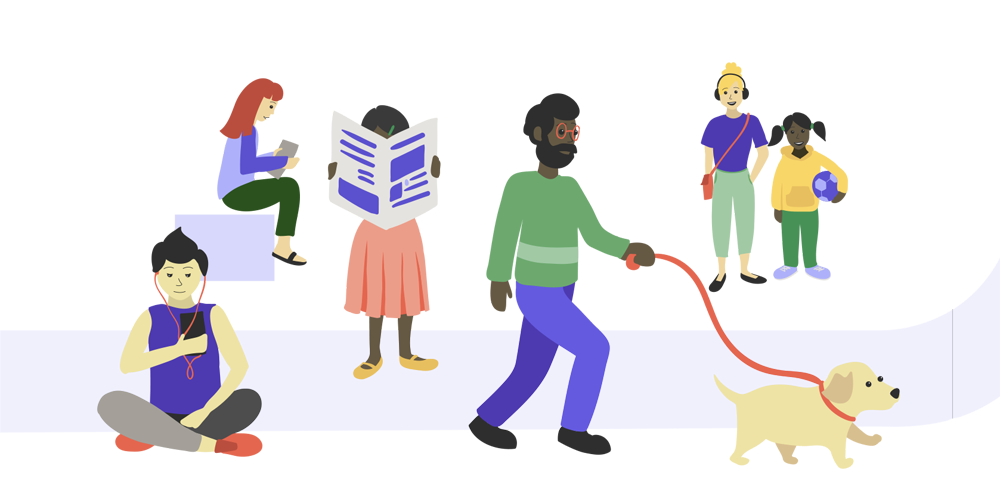Learning to perform activities of daily living, like dressing, self-feeding, and toileting, is crucial to a person’s independence. An autistic individual’s ability to perform daily living activities may be significantly affected by cognitive and language skills challenges, as well as a range of other elements of ASD.1 Enhancing daily living activities can be improved by early intervention.
Most children learn self-care skills by adapting and observing what they have seen. In order for children to learn by observation, they must attend to and observe another, understand their actions and anticipate the effects of these elements.2 Underlying learning by observation are specific skills such as attending, imitating and understanding contingencies, and research has shown that children with ASD have challenges in these areas.2
In other words, the range of difficulties that many individuals with ASD face can make the acquisition of daily living skills that much harder. It has been noted that individuals with ASD experience daily living skills challenges relative to their cognitive skills.1 Imagine learning to put a sweater on all by yourself. A person with autism may, first of all, not inherently value doing things “all by myself," or care about how they appear to their peers if they can’t perform a certain skill; they may have impaired fine motor skills that make buttoning the sweater a challenge; and they may not like the way the woolen garment feels. Social, motor, and sensory issues can collide.
The tendency to insist on sameness can also make acquiring life skills difficult. For instance, issues around eating and self-feeding can be complicated by a child’s acceptance of only a limited number of foods. In a study contrasting children with autism spectrum disorder and peers, the findings demonstrated that food selectivity is more common among children with autism.3 At the same time, it’s important to note that developing routines can be beneficial too, to help acquire new levels of independence and promote wellbeing.
Behavioral techniques,4 which attempt to reward and encourage desirable behavior, are often used to teach life skills. Which skills are targeted and what specific techniques are used will depend on the needs and developmental level of the individual. Toileting is one obvious building block skill that can be difficult to acquire for some individuals with any developmental disability;5 mastering such a skill can make a huge difference in the day-to-day life of a person with an ASD, as well as in the life of their caregivers.
Acquiring life skills is an important focus of intervention across the autism spectrum, not only for people with the greatest degrees of support need. Across ages and developmental levels, people may need different targets, and it is important to be responsive to the gaps that the autistic person or family members are highlighting, and to establish the next steps to achieving a level of independence that is meaningful for them. For some, it may be that adaptive skills come with greater awareness of the importance of self-care and how it will impact their success at work or school.
References
- Bal, V., Kim, S., Cheong, D., & Lord, C. (2015). Daily living skills with autism spectrum disorder from 2 to 21 years of age. Autism, 19(7), 774-784. doi:10.1177/1362361315575840
- Foti, F., Mazzone, L., Menghini, D., De Peppo, L., Federico, F., Postorino, V., . . . Vicari, S. (2014). Learning by observation in children with autism spectrum disorder. Psychological Medicine, 44(11), 2437-2447. doi:10.1017/S003329171300322X
- Chistol, L., Bandini, T., Must, L., Phillips, G., Cermak, A., & Curtin, S. (2018). Sensory sensitivity and food selectivity in children with autism spectrum disorder. Journal of Autism and Developmental Disorders, 48(2), 583-591. doi:10.1007/s10803-017-3340-9
- Roane, Fisher, & Carr. (2016). Applied behavior analysis as treatment for autism spectrum disorder. The Journal of Pediatrics, 175, 27-32. doi:10.1016/j.jpeds.2016.04.023
- Sutherland, J., Carnett, A., van der Meer, L., Waddington, H., Bravo, A., & Mclay, L. (2018). Intensive toilet training targeting defecation for a child with autism spectrum disorder. Research and Practice in Intellectual and Developmental Disabilities, 5(1), 87-97. doi:10.1080/23297018.2017.1360153 .
Reproduced with permission of Kennedy Krieger Institute, Baltimore, MD, USA. This information appeared originally on the Interactive Autism Network Community website at IANCommunity.org. It has been modified from the original with permission, but Kennedy Krieger Institute is not responsible for the modifications.
Photo by Mehrad Vosoughi on Unsplash


